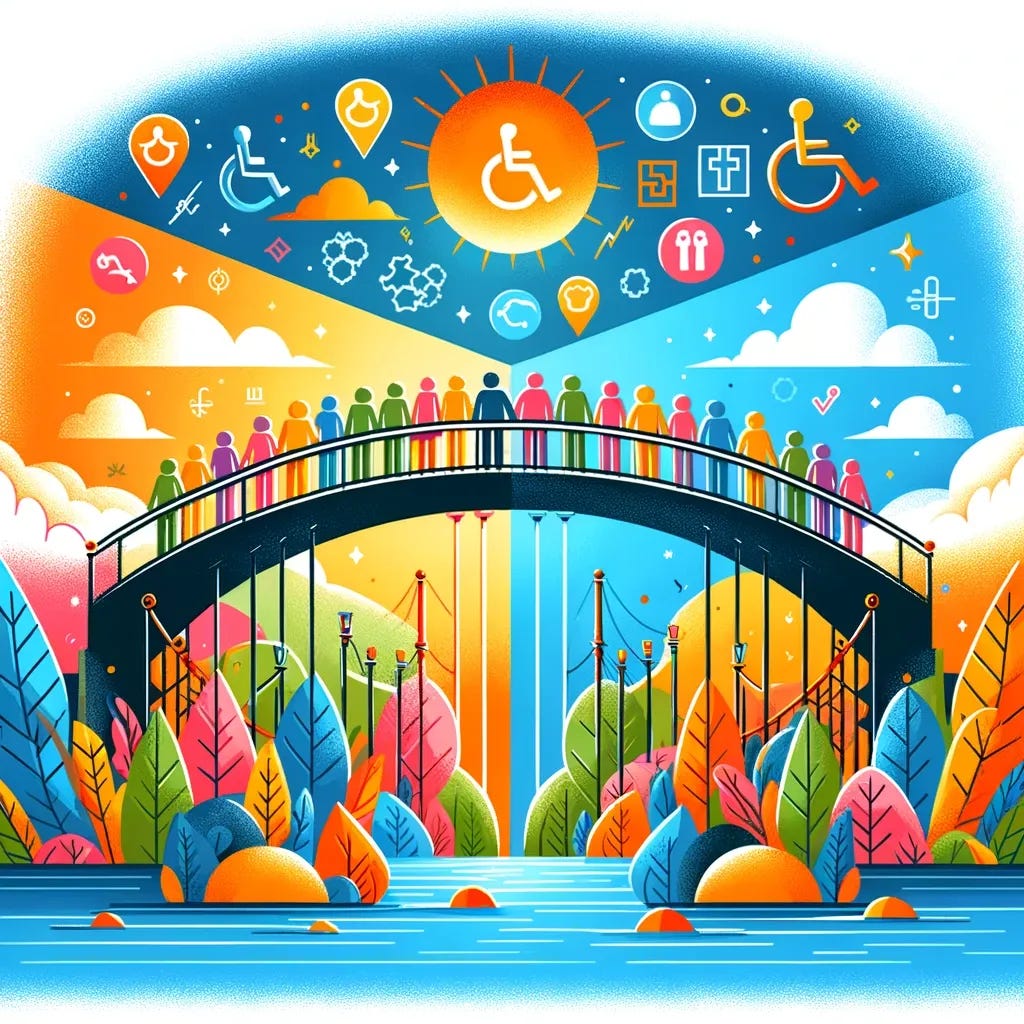Building Bridges, Not Barriers: The Power of Calling In for Accessibility
Listen to This Article
0:00
/170.304
1×

In the realm of education and digital content creation, the principle of inclusivity is paramount. It is a challenging task to establish an environment that caters to everyone's requirements. Failing to consider accessibility can unintentionally exclude participants based on their abilities. This is where the nuanced yet powerful concept of "calling in" versus "calling out" becomes crucial.
Understanding Calling In vs. Calling Out
"Calling out" refers to the practice of publicly pointing out a person's mistake, often in a manner that can be perceived as confrontational or shaming. While it can bring attention to an oversight, it may also lead to defensiveness or discomfort, hindering the opportunity for constructive dialogue.
"Calling in," is an approach rooted in empathy and understanding. It involves privately addressing the issue with the individual, offering them an opportunity to understand and rectify their mistake without public embarrassment. This method fosters a learning environment and encourages open communication about accessibility needs.
The Classroom Scenario: A Case Study
Consider a digital classroom where a teacher uses a video without captions as part of the lesson. A student with hearing impairments will feel excluded from this learning experience. By "calling in" the teacher—perhaps through a private message—the student can explain the oversight in a non-confrontational manner. Now that the teacher is aware, they can make sure that all upcoming videos include captions, improving accessibility for everyone.
The Ripple Effect of Calling In
The impact of calling in extends beyond the immediate correction of an oversight. It creates a precedent for how a community tackles accessibility issues. It educates and sensitizes creators and educators about diverse needs, embedding inclusivity into the fabric of content creation and presentation.
Embracing Feedback and Continuous Improvement
For content creators and educators, being "called in" is an invitation to learn and grow. It's natural to feel apprehensive about making mistakes, but the willingness to receive feedback and adapt is invaluable. Each incremental improvement in accessibility at the individual level is a notable step forward in striving for betterment.
Examples of Positive Change
Captioning and Transcripts: Adding captions to videos and transcripts for audio content can make a world of difference for individuals with hearing impairments.
Alternative Text for Images: Providing descriptive alternative text for images helps visually impaired users understand visual content.
Adjustable Font Sizes and Color Contrast: These adjustments aid individuals with visual impairments or dyslexia, making text more readable.
Conclusion: A Culture of Inclusivity
The journey towards complete inclusivity is ongoing, and it's paved with learning, adaptation, and open dialogues. By calling in instead of calling out, we foster a supportive environment where everyone is empowered to contribute to this journey. It's not about being an expert on every disability, but being open to making changes that welcome all abilities. Through collaboration and understanding, we can all play a part in making the world more inclusive and accessible.

